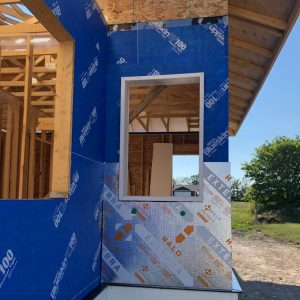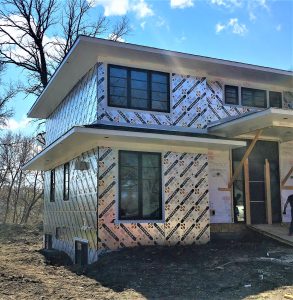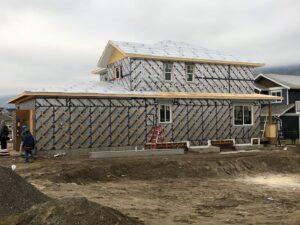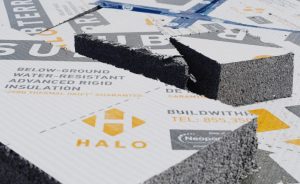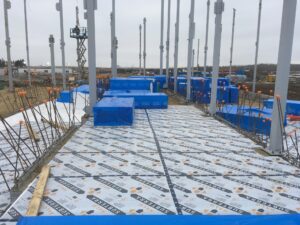Stuck deciding between spray foam insulation and Halo’s Interra brand of foam board insulation for your next interior insulation project?
Both are reputable, effective products, and each has it’s advantages. So in this post, we’ll try to make your decision a bit easier with a list of pros and cons for each.
Read on to learn more!
Interra Foam Board Insulation Pros and Cons
Interra’s rigid insulation fits a wide range of applications. But no product is ever perfect for all situations, so it has its pros and some cons. We’ll list these below.
Interra Pros
- You can use it as an air control layer. Just remember to tape the joints properly.
- Using Interra reduces the chance of condensation forming in the wall cavity. That’s because Interra moves the first condensation surface from the foundation’s interior face to the interior side of the foam board insulation.
- Interra reduces moisture in the wall assembly. It does this by blocking the inward path of vapor from the foundation.
- With Interra, you can use strapping instead of studs to secure drywall to the wall assembly.
- Adding a layer of Interra to your wall assembly assures long-term, stable R-Values that leading XPS products fail to deliver.
Interra Cons
- It’s not always easy to cut Interra boards to fit in headers, especially I-joists.
- Depending on where you’re building, there may be limited information on installation details, especially air sealing. You may also have trouble finding the correct fasteners.
- Since it’s still a relatively new (and less familiar) product, trades often use incorrect tape to seal the joints between the boards.
- You may find it difficult delivering Interra boards to the basement — especially if the stair clearances are on the narrow side.
Spray Foam Insulation
Spray foam is a very capable insulative product, which also comes with certain limitations. Below, we’ll review its most prominent advantages and disadvantages.
Pros of Spray Foam Insulation
- Like Interra, spray foam insulation can move the first surface of condensation from the inside of the concrete wall to the front face of the spray foam. This reduces the risk of condensation forming in the wall cavity and the subsequent moisture buildup.
- Manufacturers claim that spray foam insulation can serve as a wall assembly’s vapor and air control layer. However, this is only true of 2lb spray foams.
- Compared to other insulation types, it doesn’t take too long to install spray foam insulation.
- The industry is generally impressed with spray foam’s ability to seal and insulate headers. However, its air seal quality deserves serious scrutiny.
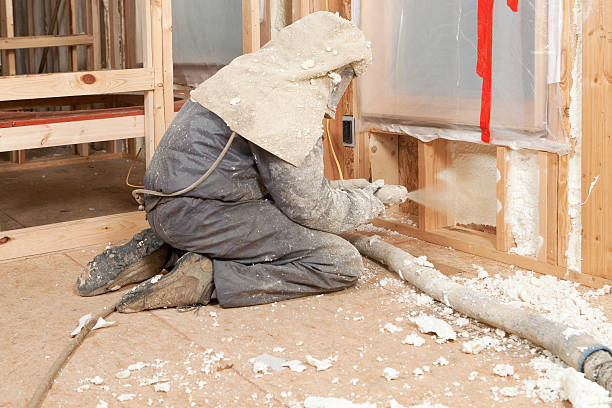
Cons of Spray Foam Insulation
- The Passive House Standards don’t recognize spray foams as an air control layer. That’s because spray foam insulation often debonds from other materials, and this creates air leakage pathways.
- If you’re using spray foam, you have to secure drywall or another thermal barrier to the stud.
- The manufacturing process behind spray foam causes high Greenhouse Gas emissions compared to other insulation materials, like Graphite Polystyrene (GPS).
- Over time, spray foam insulation deteriorates, and its R-Value degrades.
- If you’re using spray foam insulation in a retrofit project, you’ll have to vacate the occupants for 24-72 hours, depending on the manufacturer. In contrast, rigid insulation products don’t affect occupants’ health and wellbeing after installation.
- If the spray foam doesn’t cure properly, you have to remove it. This is a tedious process. And, since it’s impossible to remove every bit of the spray foam, the odor may linger.
- Future renovations may prove difficult, since removing all spray foam to make space for new electrical wiring or plumbing is not always possible.
- Spray foam can be more costly that foam board insulation.
Wrapping It Up
Both Interra and spray foam insulation have their pros and cons.
That said, Interra is a far better bet if you’re looking for overall quality, performance, and stable R-Values. Spray foam, on the other hand, works well if you want to save time on installation, but it can be more costly overall.

